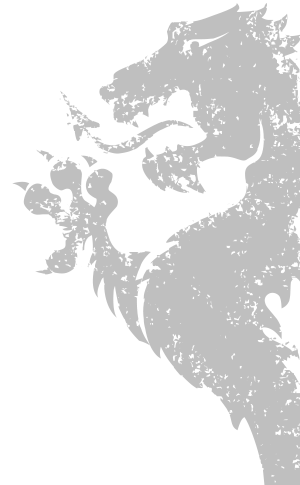 Image: hgjart
Image: hgjart
Alignment
Your deeds, both good and bad, reflect back on your character's alignment.
During your character's time within sessions or roleplay, should your character do something that the DMs consider to be worthy of an alignment shift, the DM may adjust your alignment based on Good or Evil.
Alignment may also come into play when putting together groups for T2+ quests. If the party is composed of characters that would make a hostile party, the roster may be adjusted. This is to prevent parties from being unable to work with one another.
Alignment Scale
The chart below shows the score ranges that correspond to the various alignments. This is a two-axis system, and not a linear line. Points corresponding towards Good to Evil are tracked separately (with Law and Chaos being more stable from character creation). This creates a more fluid and accurate representation of your character.
Alignment shifts can happen any time, even through RP, and are not announced when entered by a Dungeon Master. If your character has gone out of alignment with their god, the DM will let you know. Point shifts are calculated from a master list of topics that are looked at individually for each character after quests or RP. This list and reference sheet is not shared or discussed with the players. This ensures that character development happens more organically and you are not "working" towards a specific alignment by forcing specific interactions.
Alignment Chart
| LAW | CHAOS | ||||||||||||||||
| 7 | 6 | 5 | 4 | 3 | 2 | 1 | 0 | -1 | -2 | -3 | -4 | -5 | -6 | -7 | |||
| GOOD | 7 | ||||||||||||||||
| 6 | |||||||||||||||||
| 5 | LG | NG | CG | ||||||||||||||
| 4 | |||||||||||||||||
| 3 | |||||||||||||||||
| 2 | |||||||||||||||||
| 1 | |||||||||||||||||
| 0 | LN | N | CN | ||||||||||||||
| -1 | |||||||||||||||||
| -2 | |||||||||||||||||
| -3 | |||||||||||||||||
| -4 | |||||||||||||||||
| -5 | LE | NE | CE | ||||||||||||||
| -6 | |||||||||||||||||
| EVIL | -7 |
Piety
Follow the tenets, or lose your god's favor.
If you are not within one step of your deities alignment, you can not gain Piety points from adventures, and lose access to that deities piety rewards until you are within one step of your deity's alignment. Alignment must be within one step of your Deity based on the table above, without using diagonals. Your Deity's base alignment must be a block adjacent to your own. For example a Lawful Good Deity could also have a follower that is Neutral Good or Lawful Neutral, but not Neutral.
Classes of Divine Powers
For a Cleric, Paladin, Saint, or Thaumaturgical Scholar to use their divine abilities, the above rule under Piety is in place. If you are not within a step of your Deity's alignment, you lose access to your class spells and abilities until your alignment matches within one step of that deity. This does not include features such as Extra Attack or Fighting Style, but powers based on divine means, such as Smite, Spells, Channel Divinity, ect. This also includes the gaining of Piety points, and use of Piety rewards.
Divine Conversion
A Cleric, Paladin, Saint, or Thaumaturgical Scholar who grossly violates the code of conduct required by their god (generally by acting in ways opposed to the god's alignment or purposes), loses all spells and class features, except for proficiencies. They cannot thereafter gain levels as a cleric or paladin of that god until they atone.
There are times where a character undergoes a dramatic experience in roleplay or a game session that may even shift their views entirely. Such a character may convert their faith to a new deity, losing all current Piety, but regaining their spells and class features.
By converting to a new deity, there is also an accompanying cost of gold and downtime based on a formula on a character's tier. This represents the time and energy spent in atoning.
250gp. x (Tier x 2) x TierDowntime Days Cost:
20DT x (Tier x 2) x TierExample: A tier 2 player would be required to pay 2000gp and 160 downtime days.
Upon paying the costs above, the character receives the benefit of an atonement from a follower of the new deity. After selecting a new domain from the listed deities domains, the character regains access to their divine magic and abilities. The granted powers of the new domain will replace granted powers from the old domain. This method is the only one by which a character can change their deity for the specified classes above.
Alignment FAQ
Q: What things are good or evil?
A: The DM's will not publish this list, nor speak of it. To do so would illustrate a guide for people to follow to ensure a desired result. Alignment is organic and tied to actions and circumstances of the moment, and thus cannot be scripted towards a planned outcome. Play your character as you believe it should be played.
Q: I did something that my character thought was good, but didn't get any good points and/or got points of evil.
A: What you or your character does about a thing is not the basis of if it is good or evil. The DM takes into account many different circumstances but mostly the morality of the action given things like the setting, time, mitigations, and time to come to the decision.
Q: Necromancy?
A: The use of necromancy is not in and of itself evil. However, the creation of the undead is evil, in all cases.
